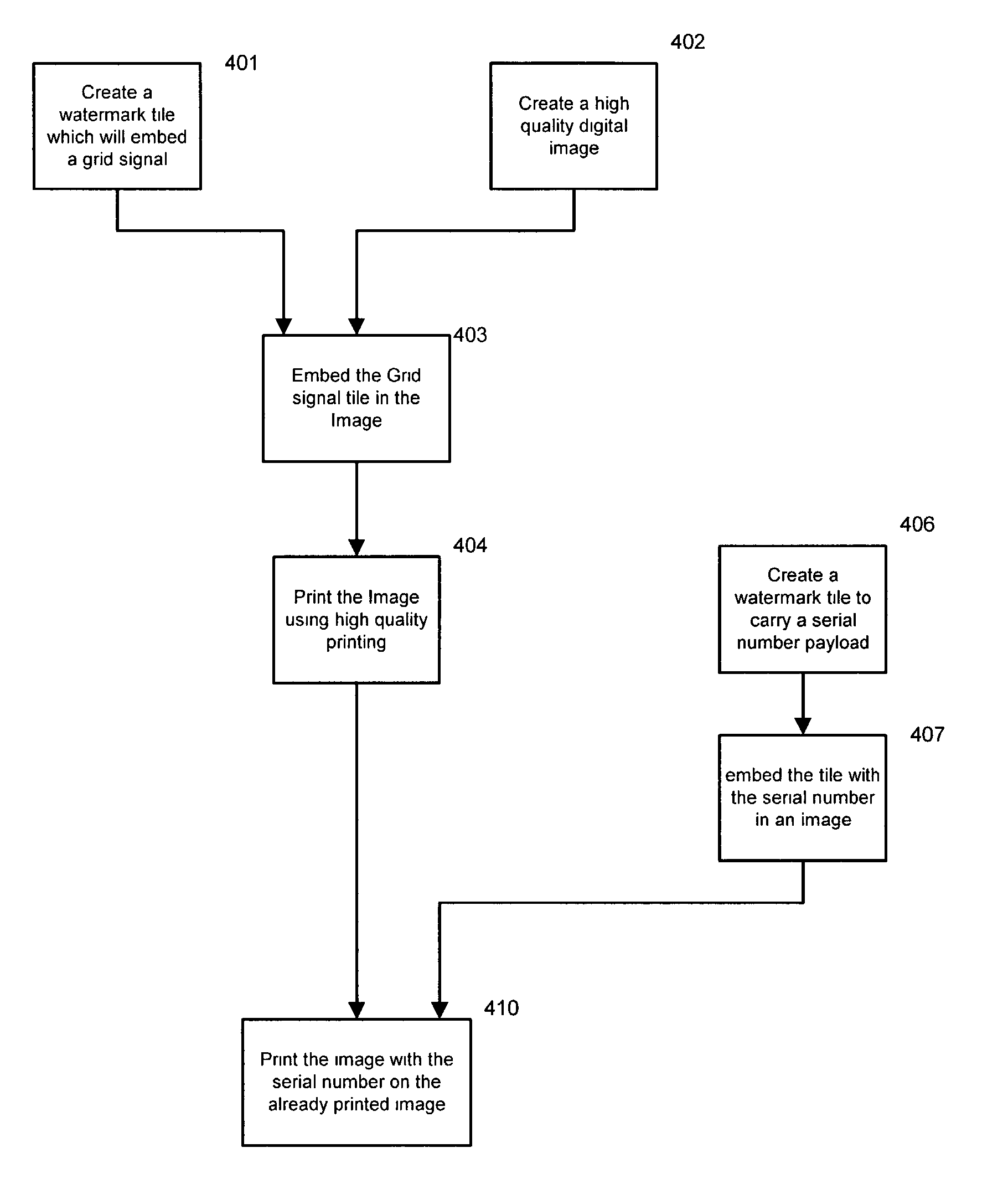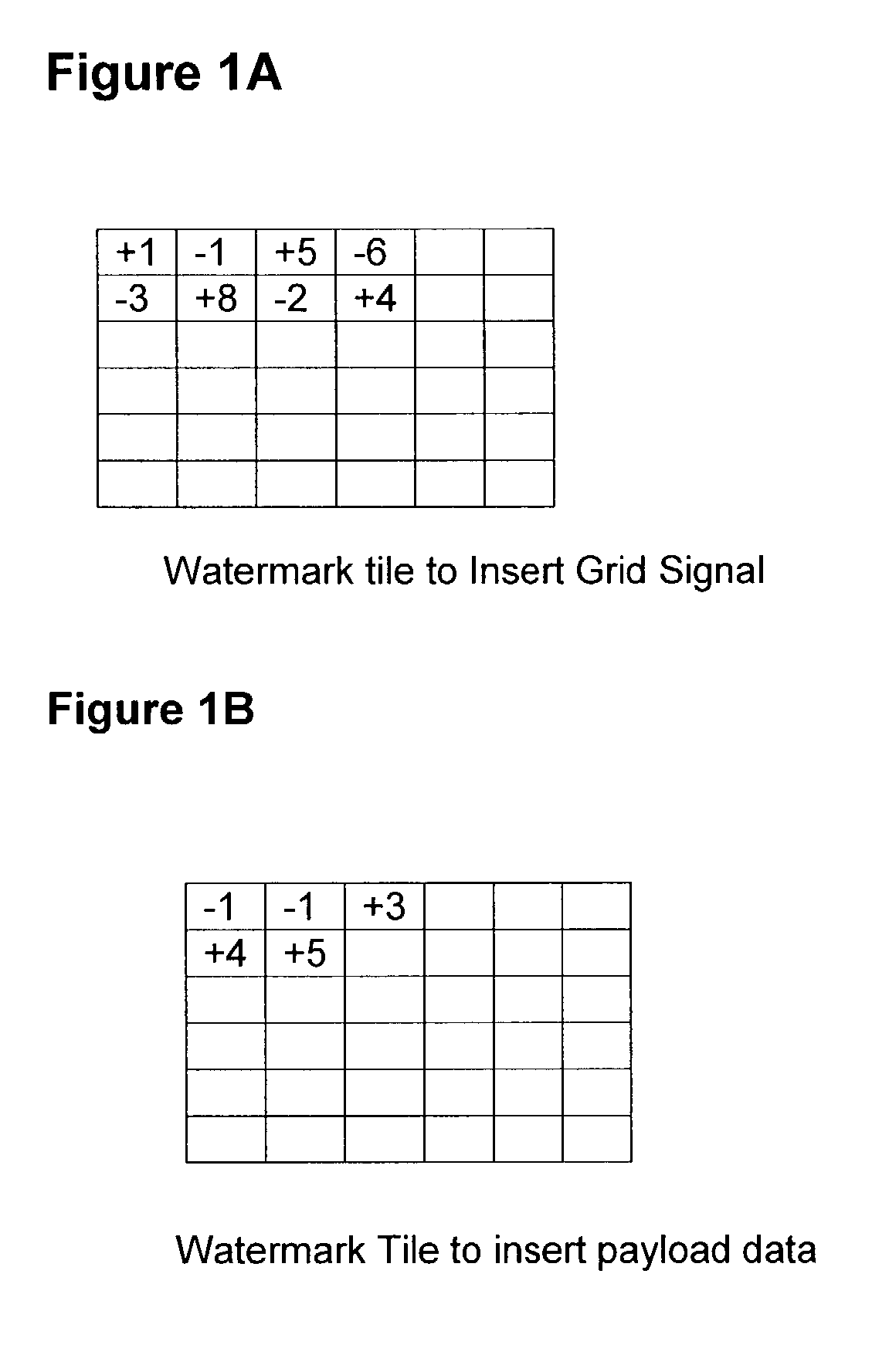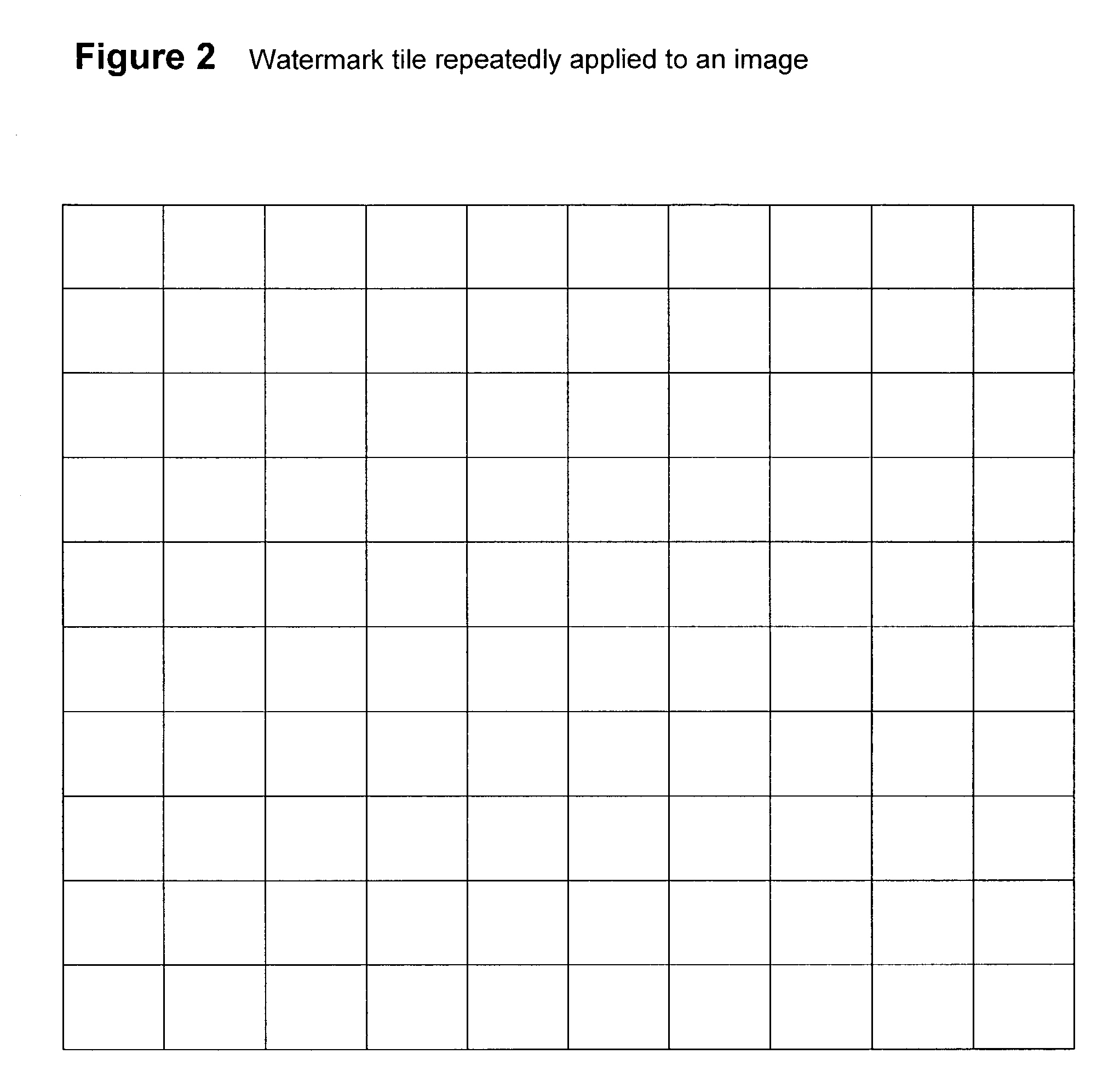Watermarking with separate application of the grid and payload signals
a payload signal and watermarking technology, applied in the field of printing, can solve the problems of time-consuming and laborious process of applying the changes specified by the watermark tile, and the general uniformity of the signal of the payload, so as to avoid creating significant visual artifacts and less effor
- Summary
- Abstract
- Description
- Claims
- Application Information
AI Technical Summary
Benefits of technology
Problems solved by technology
Method used
Image
Examples
Embodiment Construction
[0012]Two embodiments of the invention will be described. The first embodiment involves applying serial numbers to high quality printed documents such as paper currency. The second embodiment involves applying variable watermark data to documents which are printed at very high speed such as product containers or merchandise coupons. Various alternatives are also described.
[0013]Each of the embodiments use a first watermark tile to specify the changes in an area of an image needed to embed a particular grid signal into the image. A second watermark tile is used to specify the changes in an area of an image needed to embed particular payload data into an image. FIG. 1 illustrates two watermark tiles. As is conventional with digital watermarks, the changes specified by the watermark tiles are embedded in multiple areas in an image. FIG. 2 illustrates a watermark tile embedded in an image 1000 times. The figure shows the multiple areas where the tile would be embedded in the image.
[0014...
PUM
 Login to View More
Login to View More Abstract
Description
Claims
Application Information
 Login to View More
Login to View More - R&D
- Intellectual Property
- Life Sciences
- Materials
- Tech Scout
- Unparalleled Data Quality
- Higher Quality Content
- 60% Fewer Hallucinations
Browse by: Latest US Patents, China's latest patents, Technical Efficacy Thesaurus, Application Domain, Technology Topic, Popular Technical Reports.
© 2025 PatSnap. All rights reserved.Legal|Privacy policy|Modern Slavery Act Transparency Statement|Sitemap|About US| Contact US: help@patsnap.com



